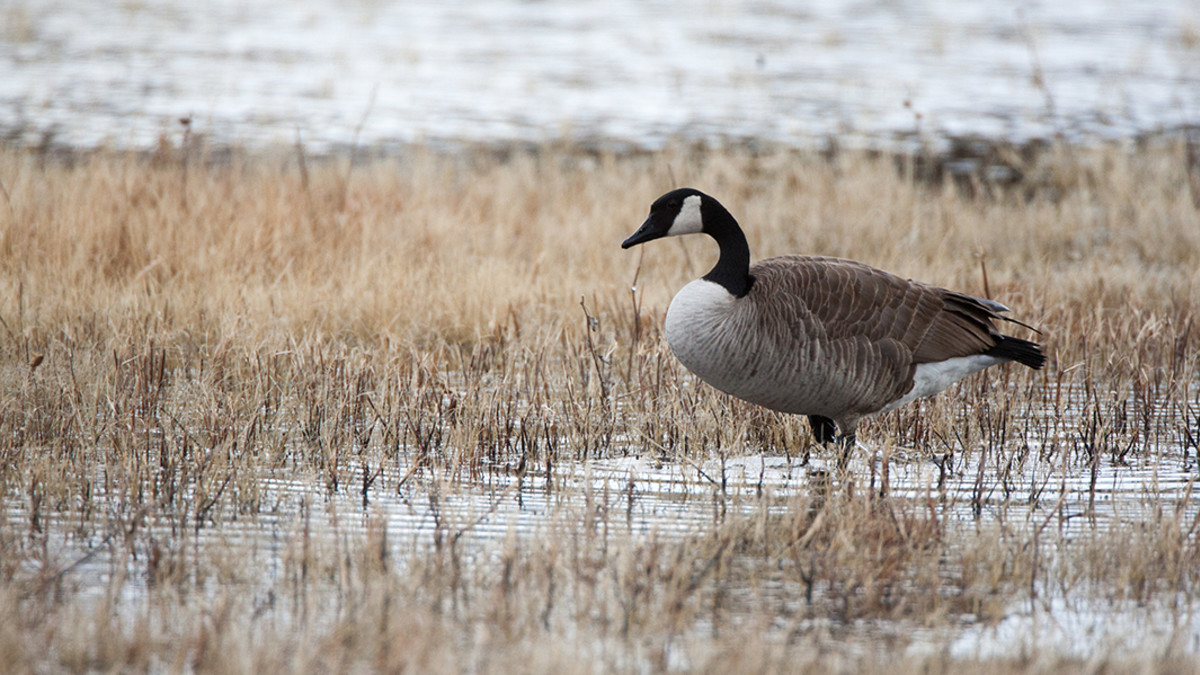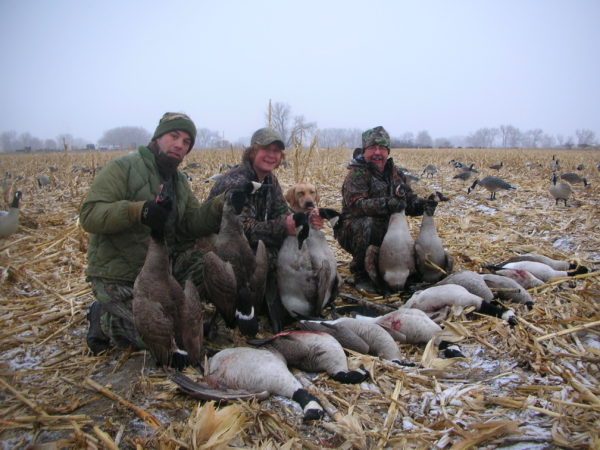
The Canada goose is the most common and most frequently encountered goose species. Their availability is extremely high, and they can be found everywhere from golf courses to grain fields to backwoods marshes.
Seasons for Canada geese are long and are often divided into early seasons, when local geese are targeted and late seasons, when migrating geese are targeted. Bag limits are also generous, allowing a hunter to bag upwards of five or six geese. A haul that can easily amount to fifty or sixty pounds of birds that can be plucked and gutted and converted into a host of goose goodies ranging from pastrami to pickled hearts. Due to their generous size, geese are where big game and waterfowl hunting collide.
Scientific Name
Branta Canadensis
A.K.A.
Canadas, Canadians, honkers
Bar Room Banter
Between 1914 and 2004, almost 3 million wild Canada geese have been fitted with ankle bands by waterfowl researchers; of those, 715,000 were killed by hunters who then reported the band numbers along with the date and place of harvest to authorities. Everyone from air traffic controllers to farmers has utilized the resulting information about the movements and life histories of Canada geese.
Physical Characteristics
The Canada goose has extremely distinct features, including a long black neck, white face patch, and black bill, legs, and feet. The rump is black with a white V, lower parts are white, wings and back are dark brown breast feathers are dark gray to light gray. Sexes are similar in appearance.
The number of Canada goose subspecies that exist in North America varies with who you ask. Arguments range from five to eleven, with the primary differences among these “subspecies” being size and range. A Greater Canada goose can weigh up to 15 pounds and stretch to almost four feet, while smaller varieties weigh as little as three or four pounds and measure less than two feet. Family flocks are typically five to eight birds. Migrating flocks can number over a hundred.
Habitat
Canada geese breed throughout Canada and much of Alaska, migrating to the central and southern U.S. and also Mexico. Many areas in the U.S. have local populations as well, many of these never migrate. The birds are found on all manner of lakes, rivers, ponds, marshes, and they feed primarily in agricultural fields or other cultivated landscapes. They are never far from open water, where they rest during the day and roost at night.
Diet
Aquatic plants, wild and domestic grasses, and agricultural crops such as corn, wheat and alfalfa.
Life and Death
A slew of predators and rodents will harvest eggs from unguarded nests, and many predators will target the young. Adults are much less susceptible to predation. Canada geese are long-lived, and can survive from 10 to 25 years.
Breeding and Reproduction
Canada geese typically nest in the early spring; females lay 2-8 eggs.
Telltale Sign
Look for cylindrical droppings, the size and shape of bent and half-smoked cigarettes. Heavily used areas will be littered with many, many droppings. Also look for tracks in soft shoreline mud. Another giveaway is the Canada goose’s distinctive “her-honk” call, which can be heard at a great distance.
Edibility
Canada geese have a mild flavor that results in good eating; done properly, it resembles lean beef in texture. If they are not prepared properly, overcooking the breast meat is a common mistake, the meat can be tough and almost unpalatable.

If you’re looking for geese recipes, here are a few suggestions from the crew:
- Wild Goose Pastrami by Steve Rinella
- Corned Goose Breast Recipe by Steve Rinella
- Confit Gizzard Tacos by Danielle Prewitt of Wild + Whole
- You can also find a new selection of goose and waterfowl recipes in the new MeatEater Fish and Game Cookbook.






Conversation